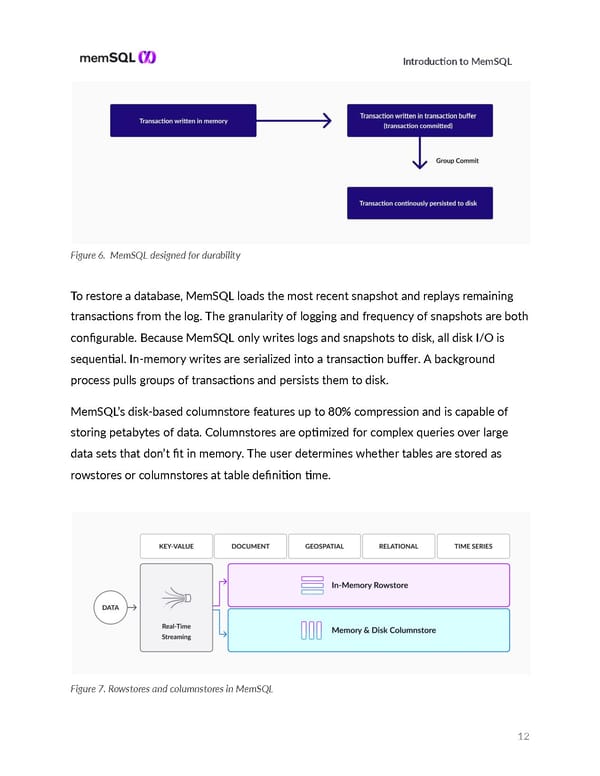I ntroducon to MemSQL Figure 6. MemSQL designed for durability To restore a database, MemSQL loads the most recent snapshot and replays remaining transacons from the log. The granularity of logging and frequency of snapshots are both configurable. Because MemSQL only writes logs and snapshots to disk, all disk I/O is sequenal. In-memory writes are serialized into a transacon buffer. A background process pulls groups of transacons and persists them to disk. MemSQL’s disk-based columnstore features up to 80% compression and is capable of storing petabytes of data. Columnstores are opmized for complex queries over large data sets that don’t fit in memory. The user determines whether tables are stored as rowstores or columnstores at table definion me. Figure 7. Rowstores and columnstores in MemSQL 12
 Technical Introduction to MemSQL Page 11 Page 13
Technical Introduction to MemSQL Page 11 Page 13